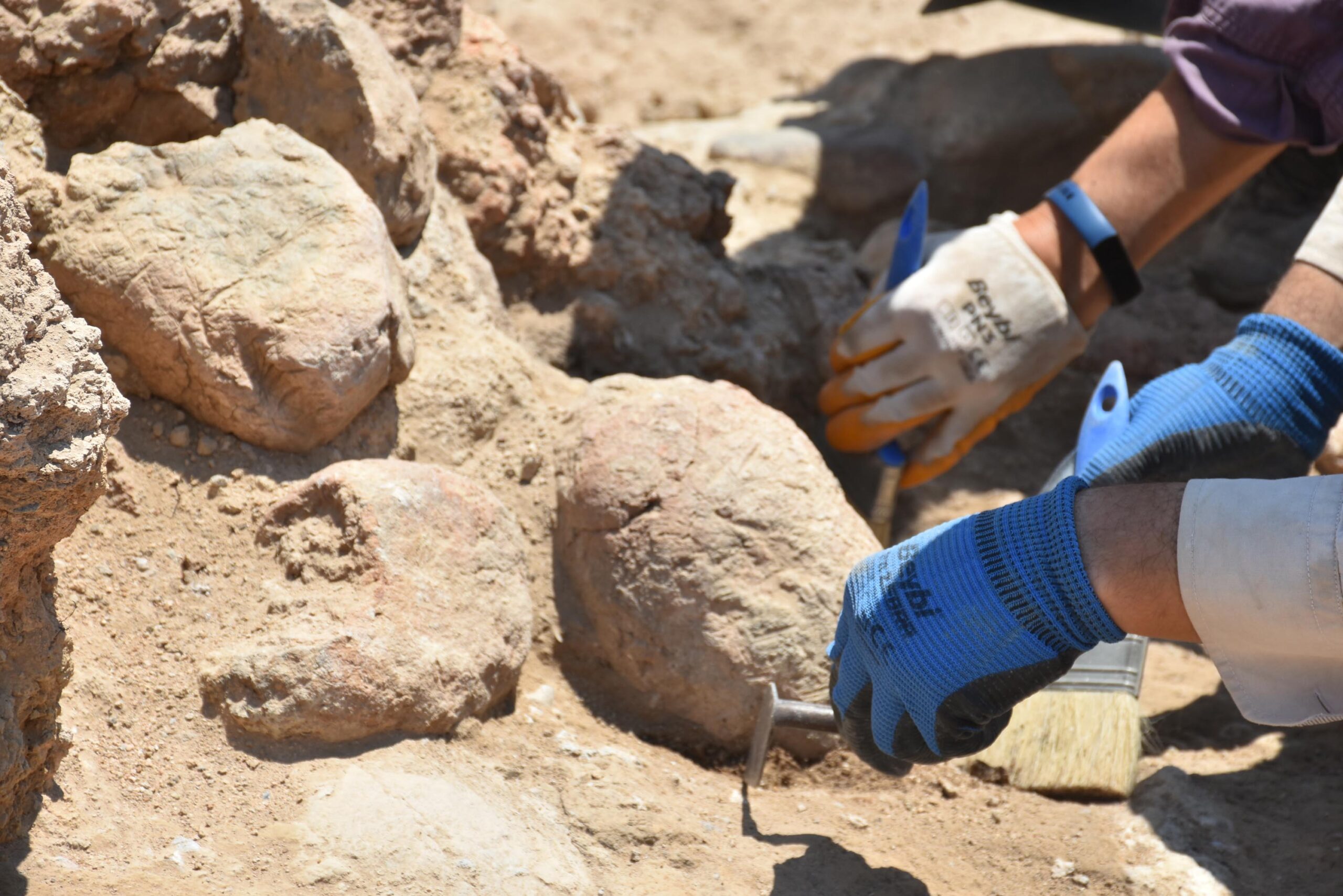News in English
8000 years old fingerprints found in Ulucak Mound in Izmir

Excavations continue in the 8850-year-old Ulucak Mound, the oldest settlement in Izmir. It was understood that the structure unearthed during the excavations at Ulucak Mound in the Kemalpasa district is the oldest ceramic production workshop. Fingerprints of the pottery masters who lived in the city 8000 years ago were also found on the dough used in the production of ceramics. The head of the excavation, Prof. Dr. Ozlem Cevik stated that the workshop is very important as it physically demonstrates the first specialization in ceramic production.
Excavation continues in the 8850-year-old Ulucak Mound, the oldest settlement in Izmir, with the support of the Culture and Tourism Ministry, Izmir Metropolitan Municipality, University of Trakya, Kemalpasa Municipality, and Kemalpasa Organized Industrial Zone. Lecturer Prof. Dr. Ozlem Cevik from the University of Trakya’s Faculty of Letters, Department of Protohistory and Pre-Asian Archeology took over the excavation site’s directorate in 2009 and during the works on the mound, many findings related to the history of Izmir have been unearthed so far. During the works, it was also detected that Ulucak Mound hosted the first farmers of the Aegean Region. It was also understood that the first settlers built their houses on top of each other along the 7.5-meter cultural layer and settled in the same place for 1150 years without interruption.
“IMPORTANT FOR THE WORLD ARCHEOLOGY”
The ceramic production workshop and the findings in Ulucak Mound, which is valuable for world history, provided access to much new information. It was noted that in the 100-square meter structure, which is the oldest ceramic production workshop in history, there are kilns in which ceramic pots were fired and many ground stones were used to grind hematite paint in the painting of ceramic pots. Prof. Dr. Ozlem Cevik, the head of the excavation, said, “Historically, we know that the first ceramics were made 9 thousand years ago in a wide geography from Mesopotamia to the Aegean Region. When these first ceramics were made, they were probably produced by women in the household. A thousand years after the emergence of the first ceramics, it was assumed that these were made by pottery masters, based on the examinations made on the ceramics found in this wide geography that I mentioned. This workshop we found in Ulucak is important for the near east or world archeology. Because for the first time, there is physical proof that ceramics were made by experts.”
SPECIALIZATION IN CERAMIC PRODUCTION
“This structure is very different from houses. A place with 6-7 rooms. All stages of ceramic production are applied in these areas. n other words, the entire chain of ceramic production takes place, from the preparation of the dough to its shaping, from the use of the primer to the finishing. We can easily say that this is a ceramic production workshop. According to the analysis of the seed samples, we know from the radiocarbon datings that the structure was dated to 6 thousand BC, so this is an 8,000-year-old workshop. The workshop is very important as it physically demonstrates the first specialization in ceramic production in the history of humanity. This workshop is the oldest evidence of specialization in ceramic production” said Prof. Dr. Cevik informing about the workshop.
Stating that fingerprints were found in the finds in the workshop, Cevik said, “Clay dough must be prepared before making ceramics. Workshop burned. In the dough we found, we saw that the fingerprints on it were solidified. The fingerprints and hands of people who touched it 8,000 years ago are thus preserved”


